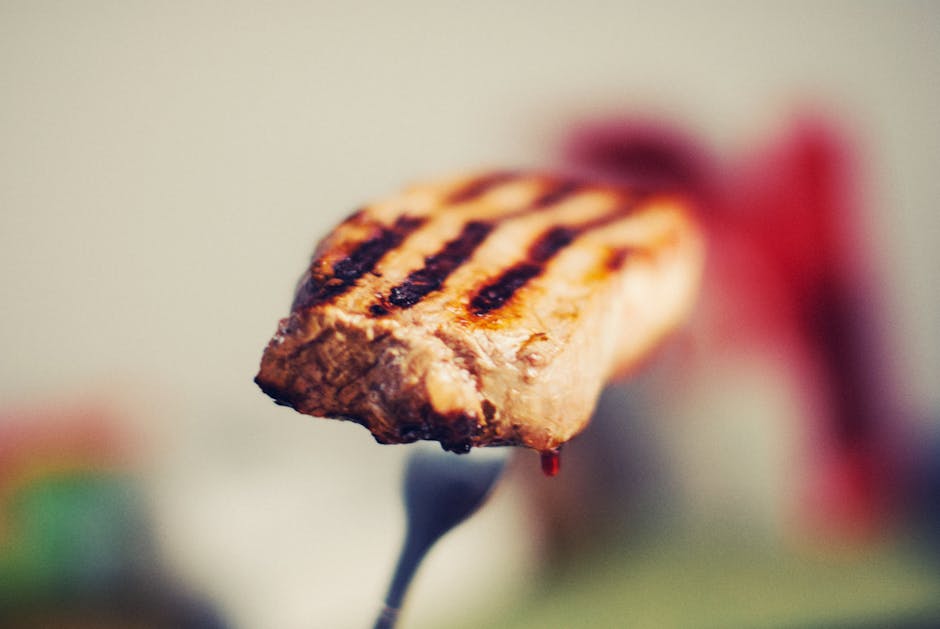In this article, we’ll provide you with some tips on how to choose and buy a BBQ Grill in your backyard. If you’re buying your first one the range of different types available can make choosing rather overwhelming. If you’re an old hand at barbecuing you’ll probably have a good idea what type you want to buy.
But whichever category you’re in, you’ll find these “Buying Tips” very useful to help you narrow down your choice.
What is a Barbecue Grill?
The words barbecuing and grilling are really two different methods of cooking – generally done outdoors.
Grilling is cooking directly over flames or glowing coals (i.e. charcoal) at high temperatures (generally around 600 Degrees F). The objective is to quickly sear the surface of the items being cooked, sealing in their flavor.
Barbecuing in its truest form involves long slow low indirect heat from smouldering logs or charcoal, and lots of wood smoke.
The Choice between Grilling and Barbecuing
Grilling is best for small pieces of food that are tender e.g. steaks, chops, burghers vegetables bread pizza, mushrooms and peppers. One of its great pleasures is its immediacy. The direct heat chars the surface of the meat, fish or vegetables sealing in the juices. Cooking times can be from 2mins (shrimps) to 20 minutes (chicken). Covers are generally left off unless you are cooking thicker items like steaks.
Barbecuing is best for large pieces of meat (large chickens, turkeys, whole pigs and cuts of meat with connective tissue like spare ribs). The essence of this method of cooking is that that it’s slow, and carried out at lower temperatures. Typical cooking times are 1 to 2 hours at 300 Degrees F, but cooking times of six hours at 200 Degrees F aren’t unusual. The long cooking times and the accompanying smoke give barbecued food its characteristic flavour.
An Overview of BBQ Grill Types ?
The most popular types which you’ll find reviewed on our website are:
- Hibachi Grill
This is a small portable charcoal grill, generally made of heavy metal with one/two metal grilling grates (racks). They are designed for direct high temperature grilling. The temperature is controlled with air vents at the bottom and by raising and lowering the grilling racks. Hibachi grills don’t usually have a lid, so they are almost always used only for direct grilling. These are some pros and cons of Hibachi grill as well.
- Kettle Grill
Kettle grills are spherical in shape. The bottom half of the sphere is supported by legs (short ones for portable units and long ones for garden and patio versions) and contains two grates – a bottom grate for the charcoal, and a top grate for grilling. The top half of the sphere is the lid which has an insulated handle so that it can taken on and off during cooking and vents to control airflow (and hence temperature) when cooking is carried out with the lid on.
The kettle grill can be used with the lid off or on, and so it’s suited for grilling, smoking and barbecuing. It’s become immensely popular all over the world because of this versatility.
- Gas Grill
The typical gas grill is a metal box lined with tube-shaped liquid propane burners. The propane gas for these comes from 20lb or 50lb gas cylinders, which are refillable. A 20lb cylinder will provide enough gas for 18 to 20 hours of cooking.
Above the burners is the heating surface, made either from v-shaped metal bars, lava stones or ceramic briquettes. Ideally, a gas grill should have two or three sets of propane burners each of which should have separate gas volume/heat controls. This provides two or three cooking zones so that the grill can be used for indirect grilling and barbecuing.
Most gas grills have a heat output classification expressed in BTU’s. Each burner should output between 10,000 and 12,000 BTU’s, although it is possible to buy monster burners, which go up to 50,000 BTU’s
It’s becoming more common for gas barbecue grills to be “plumbed in” and use natural gas rather than propane. If you can connect your barbecue grill to your household gas in this way its definitely more convenient, but it does mean that your grill won’t be as mobile as it would be with its own gas supply. Also you will have to change your burners because propane burns hotter and drier than natural gas (natural gas burners must have larger holes and bigger tubes to increase the flow of gas to obtain the temperatures required).
- Table Grill
A table grill is typically long and narrow with short legs, and is usually fuelled by propane gas. They don’t usually have lids, so they can’t be used for indirect grilling.
Table grills are used a lot for catering at large events. They can be transported around easily and set up and dismantled quickly. They are sometimes electricity powered grill rather than charcoal or propane (making them very useful for indoor cooking).
- Kitchen-style Grills
These are very large gas BBQ Grills with masses of features to enable flexible catering in the open air. They are mobile, but they tend not to be moved around a lot.
- Infra-red Grills
An infra-red is a gas grill on steroids. A main component of this type of grill is a slab of ceramic honeycomb (or something similar) which, when heated directly by the propane becomes red-hot, emitting infra-red radiation. The technology used enables very high grilling temperatures to be achieved (800 to 1000 Degrees F). The bad news is that although these grills are superb for grilling, they can’t be used for indirect cooking. Many manufacturers of infra-red grills get round this by combining an infra-red with a conventional grill, aiming to give you the best of both worlds.

What’s Best Barbecue Grill for You?
There isn’t an easier answer to this question, but by considering the following three factors you’ll develop a better idea about your “grilling personality” and find it easier to choose the best product that’s right for you.
Size
How many people do you need to grill for? How big is your deck or patio area (some barbecue grills take up a lot of space)?
Convenience
How much time do you want to spend grilling, and how often? The reason why gas grills have become so popular is that people want the benefits and pleasure of a barbecue grill, but they don’t want to spend a lot of time getting it ready for use or cleaning it afterwards.
Type of Cooking
Will you use your barbecue grill mostly for grilling, or do you want to use if for cooking turkeys and large joints of meat?
What Features to Look for in Your Barbecue Grill
Here’s some tips on what to look for:
The Charcoal Grill
If you’re looking at a barbecue grill with legs, make sure they aren’t wobbly and are fixed firmly to the firebox
Has the product you’re looking at got a heavy-duty metal bowl or firebox with a tight-fitting lid (if it has one)?
You’ll need a grate at the bottom for your burning charcoal and vents in the bottom and the lid to enable you to adjust the temperature.
Is the grate solid and easy to remove for cleaning?
Are the handles well-insulated (look for wood or a synthetic material with similar heat resistance)?
Good optional extras are a thermometer, a hinged grate/rack, an ash-catcher , fittings for a rotisserie and attached work tables.
The Gas Grill
Make sure it’s of sturdy construction with a thick, heavy firebox and a tight-fitting lid
Your chosen product should have at least two but preferable three heating zones with adjustable controls for each zone
Look for a product that has electric ignition, a gas gauge and a built in thermometer
Good optional extras are a separate gas burner for heating sauces, a rotisserie and wood chip BBQ smoker box, a warming rack and attached work tables.
A good optional extra often forgotten is a spider guard for keeping insects out of the gas burners.
How to Buy Your Grill
By now you should be able to pick out a barbecue grill that will meet all your requirements, but before you make a decision:
- Look at Some Grills
There’s nothing to beat hands on experience. After you have read this article you ought to be able to look closely and critically at at any product you come across to assess its good and bad points.
- Talk to Neighbors
Ask them about their experience. What problems have they had? What would they do differently when buying their next BBQ Grill?
- Buy a Trusted Brand from a Reputable Supplier
There are many cheap deals around, but we are assuming you want to buy a BBQ Grill that will last you a few years, and that when something does go wrong or wears out you’ll have a telephone number that you can call to get good customer service. Buy a trusted brand and you’ll get all this.
We hope you found these tips useful. Happy barbecuing!








